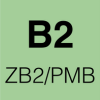Overview Profile deutsch
Profile deutsch
Profile deutsch
Profile deutsch was developed on the initiative of the Council of Europe in a trinational cooperation between Austria, Germany and Switzerland.
Profile deutsch provides an open and highly flexible system when planning, giving and evaluating lessons in German as a Foreign Language / German as a Second Language. Profile deutsch applies the standards set by the “Common European Framework of Reference for Languages“.
It describes the different levels of the “Common European Framework of Reference for Languages” from A1 to C2 and hence makes language competence measurable.
Profile deutsch is a reference book, a check-list and a treasure trove all in one and can be adjusted according to regional or other special requirements.
Profile deutsch is of invaluable help for everybody involved in
- developing and designing curricula
- producing teaching materials
- developing examinations
- dealing with language testing
- classroom teaching
Profile deutsch comes with a comprehensive database on CD-Rom including
- Can Do descriptions of the reference levels
- vocabulary & grammar (according to the different CEFR levels)
- lists of communicative strategies, learning tips and text formats
- Langenscheidt’s “e-dictionary German as a Foreign Language”
Profile deutsch helps you to
- assess levels and determine educational objectives
- supplement and expand teaching materials, strategies and lists of teaching objectives
- plan, teach and evaluate lessons and courses
- design teaching materials and combine them in different ways
- produce materials for tests and examinations
The book contains detailed instructions on how to work with the CD-Rom, the Can Do statements for the six levels of the CEFR and a systematic overview of the different lists.
Profile deutsch
ISBN 3–468-49410–6
(CD-Rom is included in the book)
Available for order at Langenscheidt and in specialist bookshops.
Objectives and benefits at a glance
Profile deutsch aims to:
- apply the Common European Framework of Reference for Languages for an individual language
- provide an open and flexible system for preparing, teaching and evaluating lessons
- offer a database which can be searched in various ways to compile different teaching materials and lists, as well as to export them for further processing into other programs
Benefits
Transparency
Teachers can easily demonstrate to a new class which subject areas are important for which level and what they can expect from the examination. The teaching objectives are transparent to everybody involved.
Coherence
The standards for tests and exams are embedded in a coherent and internationally recognized system. This is particularly helpful for curriculum planners and head teachers when defining comparable levels for tests and exams. Tertiary education institutions and personnel managers will also benefit from this when assessing the language competence of students, clients, trainees and applicants.
Flexibility
The Can Do statements and concrete examples are a real treasure trove which can help test developers at any institution compile activity-based materials which also serve as a basis for exam preparation for teachers at that institution.
Efficiency
Teachers can address the specific needs of individual learners or whole classes, define teaching objectives and organize language material.
Continue reading: The CEFR levels


